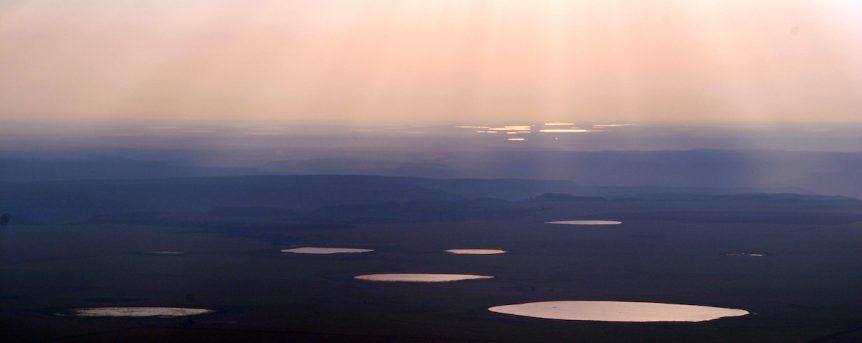Read the Transcript
This time, we’re keeping playa lakes functional. When playas are in a field or downstream from one, sedimentation often is a real problem. The process of farming sends topsoil into playa beds, decreasing water depth and interfering with water percolation. So, water gets lost to evaporation — instead of recharging groundwater. Funds from USDA’s conservation programs are helping farmers restore playas to a functional healthy state. That’s what’s happening on the northeast Colorado farm of Larry Haynes, a dryland producer at Holyoke.
“There’s two different fields we’ve been working on.”
That’s Jerry Miller, a Farm Bill Biologist with Pheasants Forever and Quail Forever at Sterling, Colorado. He designs conservation and habitat projects for Natural Resource Conservation Service cost-share funding. He provided technical support for the playa renovations on Haynes’ fields.
“He had a big playa on one end of the field, where it was kind of a horseshoe shape. He was having to farm on both sides of it and then a very narrow strip. So what we did was squared up his field and we were able to take the playa plus about four times that size of the playa and enroll those acres as a buffer. It really did make his operation a lot easier for him, and we produced some really good habitat down in that one area.
“The second field has three playas. Whenever he wanted to farm the field, they were either too wet or the crop that was there would drown out. So what we did was incorporate all three playas into one block and took out that corner of the field.”
Took out that corner of the field, and they’re coming in with a grass buffer around the playas. These plant buffers are important. They slow sediment from migrating into playa beds, they filter the water — and game birds and migrating fowl love the cover.
Remember what Miller just said. They “took out” a corner of the field. Haynes, you see, had been farming these playas, had been attempting, over the years, to farm those playas.
“It’s very rare occasions that you’re going to harvest a crop out of some of the playas, for two reasons. It may flood out as you plant it. Then if you get a rain, say the week before harvest, that playa will still have water in it, and your chances of harvesting that crop are pretty rare.”
Nowadays it’s so darned expensive to farm, Haynes is convinced you don’t want to put expensive production inputs into a mudhole. “You’d probably have a better bottom line if you farmed the best land and put the other land into a better use.”
Haynes is big on the idea of putting land to its best use. And he is finished attempting to farm his playas. In his mind, that playa is put to its best use when you forget about trying to farm it. Set it aside, create a grass buffer, and you create wonderful benefits like water filtration, aquifer recharge and wildlife habitat.
“A playa is a better land use than what most of us farmers do by trying to farm it. The farmer likes to farm everything that there is, but in the real world if they stop and think about it, economics dictates that you cannot farm poor ground and make it work.”
So Haynes is a big advocate of setting aside those playa lakes, and contacting the Natural Resource Conservation Service to learn tactics for turning the wetland into improved habitat. Farm Bill Biologist Jerry Miller says, “We’re in Pheasant country, and I try to put in some of the taller, warm season grasses and some flowering forbs into that mix so we’re developing some really good brood habitat.”
And that other very important function: “These are actually recharge sites to that aquifer and anything we can do to keep any herbicides out of those basins is a good thing. Those buffers really do a lot to filter anything that comes off that field.”
Playa Country, which ended in late 2016, was a weekly show that featured conservation and wildlife experts — as well as farmers, ranchers and land managers — talking about conservation practices that improve wildlife habitat and landowners’ bottom-line. This episode was made possible by Enel Green Power. Originally broadcast in November 2012.

